A Northumberland woman had trouble opening her eye for 16 weeks after receiving Botox


The Department of Health is now thinking about implementing a licensing program for professionals who provide non-invasive cosmetic treatments in England.
A woman has shared her experience regarding Botox injections received from non-medical practitioners, expressing concerns about her inability to open her eye for a prolonged period of 16 weeks.
Amy from Northumberland came across an advertisement on social media for a clinic that offered a certain procedure. However, upon her arrival, she discovered that the location was a residential property.
After a few days, she mentioned that she observed a slight drooping of her eye, and by the fifth day following the injection, she experienced difficulty moving her eyelid.
She has proposed the implementation of a licensing scheme.
The current regulations do not require cosmetic practitioners to possess mandatory qualifications, despite the fact that certain procedures involve the use of needles and may potentially lead to significant complications.
The Department of Health is currently considering the implementation of a licensing scheme for practitioners in England who perform non-invasive cosmetic treatments. However, specific details regarding the timeline for this potential scheme have not yet been provided.
According to Amy, 36, she became concerned when she showed up at the address in December and noticed that the treatment would take place in a room with inadequate lighting.
“In the commercial, the terms clinic and nurse were mentioned, leading me to believe that the individual was a professional. However, upon arriving at the address, I discovered that it was actually the person’s residential address rather than a clinic.”
“I had received information from another source that the treatment might feel similar to a minor bee sting, but in reality, it was quite painful.”
“I noticed some sensations during the needle removal process, such as a slight twisting feeling under the skin and a subtle pinging and scratching sensation on the surface.”
Amy sought advice from a second cosmetics expert, who suggested eye drops to strengthen the surrounding muscles and make her eye appear more open. However, she mentioned that it took approximately 16 weeks for the effects of the initial dose to diminish.
She mentioned that she became aware that the individual who performed the treatment may not have been a licensed nurse, as she declined to share information regarding the batch number of the Botox, the prescriber, and her training background.
Follow your gut and ask yourself, “Where did they get that for such a low price?” What does the law say about it? Why is it priced so low? She urged others to consider the potential outcomes of their actions and to learn as much as possible about the risks involved.
This is not the same as getting your eyebrows colored and waxed; rather, you are being exposed to a potentially lethal poison.
“I really should have simply stepped away.”
The administration of Botox, a neurotoxin derived from the bacterium Clostridium botulinum, poses a significant risk when entrusted to individuals lacking the necessary expertise and qualifications. Botox injection, a well-known cosmetic treatment, has been proven to be safe and effective when performed by trained medical professionals. Medical professionals possess the expertise to administer it in a manner that maximizes its potential impact.
Dentox is the most comprehensive course available to medical professionals interested in mastering the art of administering precise Botox injections. With Dentox, you can elevate your skills to unprecedented heights and become a true master of the art. Join us today and embark on a transformative journey toward excellence in aesthetic medicine.
Experience the ultimate in-patient training courses with Dentox! Discover a world of possibilities at our cutting-edge website, where you can explore our live courses (https://dentox.com/live-courses/) and delve into the transformative realm of online training (https://dentox.com/botox-training/). Don’t miss out on this incredible opportunity!
When Trying to More Shape Your Jawline, Should You Invest in Botox or Fillers?
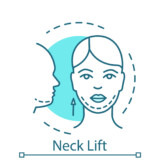
Recognizing the distinctions between these popular treatments
A well-defined jawline is frequently perceived as a characteristic that is commonly associated with a youthful and appealing appearance. For individuals interested in refining their jawline and attaining a more defined look, both Botox and jawline filler can provide effective nonsurgical options. Both of these tools can be effective in achieving the desired look, but could you please provide more information on how to differentiate between their functions? Medical professionals play a crucial role in assisting patients who are interested in enhancing, refining, or sculpting their profiles.

The ‘Nefertiti Lift’ is a well-liked treatment that involves injecting along the jawline, especially at the upper sides of the neck, to stop the muscle fibers from pulling down and softening the neck’s contour.
Neurotoxin for reduced jaw size
Botulinum toxin has been found to have potential applications in the lower face by helping to reduce the downward pull of certain muscles. As an example, the platysma is a delicate muscle that extends gracefully across the neck and connects to the lower face. Neurotoxins such as Botox Cosmetic, Xeomin, Dysport, Jeuveau, and Daxxify have the potential to be used off-label in order to address concerns related to the jawline in two distinct ways. One option to consider is the potential to address platysmal bands, which are the vertical fibers that extend from the chin toward the collar bone, in order to achieve the desired outcome. Another popular procedure is known as the ‘Nefertiti Lift’, which entails injecting along the jawline, particularly at the upper sides of the neck, in order to prevent the muscle fibers from causing a downward pull and diminishing the defined contour.
Who would make the best candidate?
Several situations are ideal for the use of botulinum toxin for less dramatic adjustments, for people with exceptionally strong muscles, or to counteract the effects of gravity.
While jawline filler can be beneficial for individuals who have a recessive chin, a rounded jaw, or facial asymmetries, it can also assist in enhancing and refining the appearance of a weak jawline that lacks definition.
What makes jawline filler unique?
There are distinct variations between neurotoxins and jawline fillers. Neurotoxins primarily affect the size of the chewing muscle, resulting in a phenomenon known as ‘jaw slimming.’ On the other hand, fillers are strategically used to alter volume, leading to enhanced definition and contouring of the jawline, often referred to as a ‘snatched’ jawline. Collagen-stimulating injectables, such as hyper-diluted Radiesse, have been known to provide highly effective and durable results.
How do you pick the best choice?
Considering patients from various perspectives and with a comprehensive approach is essential in order to identify the most suitable treatment option for each individual. Additionally, you assess the condition of the skin to determine if additional treatments such as laser or microneedling would be beneficial for tightening the skin around the jawline. In some cases, liposuction may be considered to address any excess fat in the submental chin and neck area.
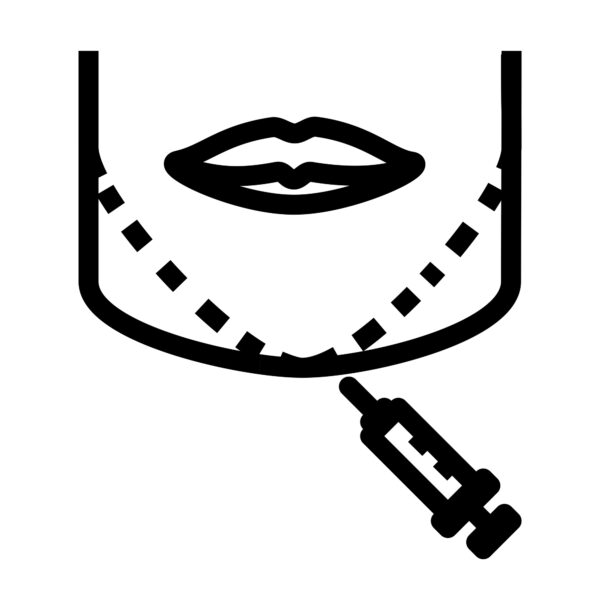
The combination of Botox and fillers can potentially produce a more comprehensive and personalized result, such as slimming the face, relaxing the chin, and enhancing or defining the jawline.
A comprehensive approach involves considering multiple factors. For instance, one could consider slimming the face, relaxing the chin, and, if necessary, enhancing or adding definition to the jawline. This approach ensures that the patient’s goals are met effectively, especially if neurotoxin treatment alone is not sufficient. Some believe that the combination of Botox and fillers can potentially lead to a more comprehensive and personalized outcome. Sculptra, an injectable filler made of poly-L-lactic acid, is utilized instead of hyaluronic acid. When administered, this treatment not only enhances volume but also encourages the body’s natural collagen production, resulting in prolonged volumizing effects.
Neurotoxins can be an excellent option for fine-tuning changes and reducing gravity’s impact. Nonetheless, jawline filler is commonly suggested for those who want enhanced volume and fine-tuned contouring. No matter what you see when you look in the mirror, you should seriously consider seeking the advice of a qualified specialist injector. When both methods are employed together, the best results can be seen. Determining which issues should be treated requires a thorough evaluation of the patient’s anatomy, any changes that have happened over time, and the patient’s stated goals. In this case, expectations are quite important.
Dentox is a program that teaches medical professionals how to properly inject patients with Botox. Learn the most recent techniques for enhancing your patients’ well-being and health. To learn more about patient training, visit either https://dentox.com/all-courses/botox-training/ or https://dentox.com/live-courses/.
Should People Avoid Early-On Botox Injections?
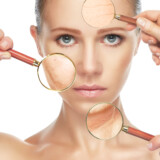

If you detect wrinkles on your face even when you’re not smiling or raising your forehead, mild Botox may be worth a try.
Botox is a topic that elicits a range of opinions. There are several questions that arise regarding the possible use of the injections. One frequently asked question pertains to the optimal age for commencing the injections, in case one is inclined towards exploring this option. Some people hold the opinion that when one’s skin starts to sag, Botox may not be as effective. Moreover, some people may feel that the idea of “preventative Botox” does not mesh with their values because of the widespread belief that it can lead to a false sense of security.
Just what is Botox?
Botox injections, which utilize a neurotoxin known as botulinum, are employed to temporarily restrict muscle movement. By temporarily inhibiting the movement of specific muscles and inducing a state of relaxation, the substance has the potential to minimize the appearance of wrinkles when gently applied to the facial area.
It is worth noting that the initial application of Botox was not primarily focused on cosmetic purposes.
Botox was isolated nearly a century ago and initially employed to address muscle spasms in the vicinity of the eyes. Physicians have been utilizing it for medical purposes and have observed that patients may exhibit a more youthful appearance. Consequently, enterprises have become interested in exploring other possible advantages of these injections.
In recent times, it appears that there may be a lack of awareness regarding the various medical applications of Botox, which include addressing conditions such as spasms, migraines, muscle disorders, vocal cord issues, bladder problems, and other related ailments. In addition to cosmetic applications, it is important to remember that there are numerous medical applications for this product.
According to the University of California, San Francisco, Botox’s widespread use in cosmetic applications has helped it become one of the most common noninvasive cosmetic treatments worldwide. It is estimated that approximately 11 million individuals have utilized Botox for aesthetic reasons.
According to professionals, the face is one of the most sought-after treatment areas in the field of non-invasive surgery.
The area between the eyes is frequently chosen as a popular location for Botox treatments. It provides a new perspective. One of the areas where wrinkles are frequently observed is the forehead. Additionally, there are certain areas that individuals often pay special attention to, such as the region where the nose scrunches by the eyes above the lip, as well as the angles of the jaw.
Irrespective of the intended outcome, the objective of the treatment is to address skin creases, and it doesn’t always have to focus on their prevention.
When is the appropriate time to begin Botox treatment?
The appropriate age to consider starting Botox may vary. There can be some variation among individuals. In certain cases, when you begin to notice lines that are visible even when your face is at rest, such as when you are not actively raising your forehead or smiling, it may be worth considering the option of starting a light Botox treatment. Typically, that age range tends to be in the late 30s to early 40s.
Genetics may also contribute to the circumstances at hand. It may be worth considering the possibility of examining your relatives. If individuals in their 50s, 60s, and 70s have experienced sun damage or developed wrinkles, it is possible that you may also encounter similar experiences. Understanding your skin type can be beneficial, as genetics can have an influence in this area.
When it comes to sun damage, one of the key recommendations for minimizing wrinkles and signs of aging is to consider reducing sun exposure. It is advisable to consider incorporating the use of sunscreen, antioxidants, and hyaluronic acid as part of your skincare routine to help protect and nourish your skin. It is advisable to take precautions, as exposure to the sun may contribute to the appearance of aging.
What are the potential risks of getting Botox injections before the recommended time frame?

Medical experts say that since wrinkles are uncommon in the early 20s, patients should think carefully about the risks involved with getting Botox at this time.
There appears to be a noticeable trend where individuals considering Botox treatments are starting at increasingly younger ages. Historically, there has been a higher level of interest among individuals in their 40s and 50s, as they tend to become more aware of the natural aging process. However, it is worth mentioning that there is now a growing trend of younger individuals showing interest in this area as well.
There are numerous factors that contribute to this trend, particularly our growing dependence on social media and visual content. We tend to attach significant value to visuals and aesthetics, which naturally leads us to focus on our own appearance as well. It could be said that we tend to be the focus of our own selfies, taking into account our personal perspective.
Additionally, it appears that there is a growing acceptance and comfort among individuals when it comes to considering the option of receiving Botox injections. There is a perception that many individuals are choosing to undergo the treatment, which may lead one to consider giving it a shot as well.
According to medical professionals, it is generally advised to consider the potential implications of receiving Botox in one’s early 20s, given the relatively low occurrence of wrinkles at this age.
If an individual in their mid-20s possesses smooth and youthful skin without any
visible lines or wrinkles, it may not be necessary to consider the option of Botox treatment.
While there are differing opinions among dermatologists, some experts question the notion that freezing muscles at a younger age can effectively prevent the development of prominent lines.
Additionally, it might be worth considering the potential risks associated with excessive toxin injections, particularly if one were to begin at a younger age.
Starting early may not necessarily have negative effects. However, if individuals experience excessive facial freezing over time, it is possible that it could potentially impact their social interactions.
Since Botox’s benefits extend beyond just preventing wrinkles, knowing when to start injections becomes increasingly important.
Dentox is a comprehensive training program designed to provide healthcare professionals with valuable knowledge and skills in the Botox injection technique. Gain the knowledge required to comprehend the most current approaches for improving the mental and physical health of the people you treat.
For a greater understanding of patient training classes, you may want to consider visiting the following URLs: https://dentox.com/all-courses/botox-training and https://dentox.com/live-courses/. These pages provide details on the distance-learning and in-person options available.
How to Become an Aesthetic Injector: A Complete Course Guide

Considering becoming an aesthetic injector? If you’re interested, this comprehensive guide will provide you with the information and skills to excel in medical aesthetics’ dynamic and ever-changing industry. Aesthetic injectors help clients achieve their cosmetic goals as the desire for minimally invasive cosmetic procedures rises.
Prerequisites for a Career as an Aesthetic Injector
To become an aesthetic injector, you need to have a wide range of skills, including a strong background in medicine, hands-on experience, and specific training. Here is a complete list of the skills that people usually look for when they want to become an aesthetic injector:

A strong background in medicine is highly valued. Registered nurses (RNs) and nurse practitioners (NPs) are often thought to be good candidates for this job because they have a lot of medical training and know how to care for patients.
- Medical Background: A solid foundation in the medical field is highly valued. In general, registered nurses (RNs) and nurse practitioners (NPs) are often considered well-suited for this position because of their extensive medical training and expertise in patient care.
- Licensing Requirements: It would be advisable to check the specific regulations that are applicable in your state or country. Contact information for each state’s medical, dental, and nursing boards is available at https://dentox.com/medical-dental-and-nursing-state-boards/. Typically, it is necessary to possess a valid nursing license in order to engage in the practice of aesthetic injection. Certain regions may have specific requirements or certifications pertaining to aesthetics.
- Additional Certifications: Consider exploring opportunities to enhance your skillset through additional certifications and training in the field of aesthetic injections. These could potentially involve courses covering topics such as facial anatomy, injection techniques, and product knowledge. Reputable training programs are known to be effective in helping individuals acquire these valuable skills.
- Training Programs: Consider exploring opportunities to get into a well-known training program that teaches you a lot about aesthetic injections. These classes teach you about all the different parts of the job, giving you the skills you need to give injections in a safe and effective way.
- Continuing Education: The field of aesthetics is characterized by its dynamic nature, as it consistently witnesses the emergence of new products and techniques. As an aesthetic injector, it is important to prioritize staying informed about the latest advancements in the field. This can be achieved through ongoing education and participation in relevant workshops or conferences.
- Hands-On Experience: It is advisable to engage in practice and acquire valuable experience while being guided by experienced practitioners. This practical experience is highly valuable for fostering confidence and enhancing your injection techniques.
- Developing a Strong Professional Network: It is advisable to establish connections with fellow professionals in the field, participate in industry events, and consider joining relevant associations or organizations in order to remain connected and well-informed about the industry.
Remember that aesthetic injection training requires careful and empathetic patient care. A successful career in this industry requires understanding and respecting patients’ aesthetic preferences and suggesting appropriate treatments. Always prioritize patient safety and pleasure in your practice.
Aesthetic Injector Training Programs
Reputable medical aesthetic organizations, educational institutions, and medical aesthetic companies offer aesthetic injector training programs. These programs vary in duration, substance, and skill level. Training programs typically include:

Facial anatomy, physiology, and the aging process are some of the topics covered in the aesthetic injector training program.
- Theoretical Education: Trainees study facial anatomy, physiology, and aging. They study dermal fillers, neurotoxins, and other injectables, their qualities, indications, contraindications, and hazards.
- Practical Hands-On Training: Aesthetic injectors must practice hands-on. Trainees practice with real patients under the supervision of experienced instructors to improve their injection abilities. Practical experience improves injection technique and self-confidence.
- Patient Assessment and Consultation: Trainees are given the training they need to do thorough patient assessments and consultations. To make a personalized treatment plan, it is important to take into account the patient’s goals, medical background, and expectations.
- Safety protocols and managing adverse events: Aesthetic procedures must be safe. Aesthetic injector trainees should learn about infection control, safe injection procedures, and how to handle potential problems.
- Facial Symmetry and Aesthetics: Aesthetic injectors must comprehend facial proportions, symmetry, and harmony to obtain natural results. Training programs often include sections on facial analysis and treatment planning.
An aesthetic injector training program’s reliability, instructor qualifications, and compliance with local aesthetic procedure legislation should be thoroughly researched. Hands-on training should be properly supervised and controlled to ensure patient safety and optimize the trainee’s educational experience. Get the education you need with the aid of Dentox. Visit https://dentox.com/all-courses/botox-training/ if you’re interested in learning more about Botox online, or https://dentox.com/live-courses/ to get hands-on experience with real patients.
Needed Skills of Aesthetic Injectors
Aesthetic injectors are highly sought after for their communication and injection talents. However, it’s important to keep in mind that experts in this industry also need to possess a few other basic skills:
- Facial Anatomy and Medical Knowledge: Aesthetic injectors must grasp facial anatomy and the underlying structures of the skin. This understanding helps ensure injection safety, precision, complication reduction, and natural results.
- Assessment and Analysis: Aesthetic injectors should examine the client’s face and address their concerns before performing any procedure. To establish a customized treatment plan that meets the client’s aesthetic goals, facial traits must be carefully analyzed.
- Infection Control and Safety Measures: Ensuring patient safety is a top priority when it comes to aesthetic injections. It is important for aesthetic injectors to adhere to rigorous infection control protocols, ensure a sterile environment, and utilize disposable equipment in order to minimize the potential for infections and other complications.
- Hand-Eye Coordination: Aesthetic injections require excellent hand-eye coordination. To inject accurately and consistently, aesthetic injectors must be skilled at handling needles or cannulas.
- Pain Management and Comfort: To give clients a pleasant experience, aesthetic injectors must understand pain management techniques. During the procedure, numbing creams, cold compresses, and vibration devices are potential options.
- Problem-Solving and Adaptability: Each client is different and may have particular needs or reactions to different approaches. To successfully modify treatment plans and address any obstacles that may develop, aesthetic injectors should ideally have the traits of flexibility and problem-solving prowess.
Aesthetic injectors can help their clients and further their own careers in the area by focusing on improving these core competencies.
Things Dentists Should be Aware of When Performing Facial Aesthetic Procedures


Today, many dental clinics offer non-invasive cosmetic treatments to help their patients feel better about themselves by improving their appearance.
Numerous dental practices currently provide non-invasive cosmetic procedures aimed at enhancing patients’ appearances and boosting their confidence. Dental professionals possess a strong understanding of anatomy and the necessary technical skills, which makes them well-suited for this task. However, it is important for them to be mindful of the potential dentolegal risks that may be involved.
Although the number of cases is currently limited, there is a noticeable increase in demand for ‘tweakments’. It is advisable for dental specialists who aspire to enter this industry to adhere to best practices in order to safeguard their professional standing.
1. Legal age restrictions
It is recommended that practices verify the age of patients who express interest in facial aesthetic procedures. According to the Botulinum Toxin and Cosmetic Fillers (Children) Act (2021), it is considered a criminal offense in England to provide botulinum toxin or injectable fillers for cosmetic purposes to individuals under the age of 18.
This also holds true in cases where the patient has obtained consent from an individual with parental responsibility. It is important to note that there are restrictions in place regarding booking appointments or making arrangements to provide treatment for individuals younger than the legal age of 18.
2. Advertising
It is important to ensure that all marketing material adheres to legal requirements, ethical standards, and the guidelines set forth by the Committee of Advertising Practice (CAP) code. The CAP has recently released advertising guidance on cosmetic interventions, providing a comprehensive explanation of how the code is applicable to both surgical and non-surgical cosmetic procedures (CAP, 2021). The Advertising Standards Authority (ASA) has the authority to request the removal of advertisements that may potentially violate the code.
In this particular context, it is crucial for practices to exercise caution and refrain from actively or indirectly endorsing botulinum toxin injections to consumers in the UK, as this falls under the category of prescription-only medicine. According to the Human Medicines Regulations (2012), there are guidelines in place regarding the publication of advertisements that may potentially encourage the use of prescription-only medicines. Nevertheless, according to the CAP guidelines, it is considered acceptable to use non-specific language such as “consultations for the treatment of lines and wrinkles.”
Practice websites may consider including details regarding the product as a potential treatment option while taking into account that it may be more appropriate to present this information on other pages rather than the homepage. It would be preferable if the information could be presented within the context of promoting a consultation, where various options can be openly discussed.
In a broader sense, the GDC’s Guidance on Advertising (2013) addresses both online and print materials, emphasizing the importance of ensuring that advertisements are accurate, transparent, and professional. It highlights that any advertising that is found to be inaccurate, deceptive, or has a tendency to mislead may be considered inappropriate, potentially leading to an investigation into one’s fitness to practice and even constituting a criminal offense.
It underscores the importance of providing patients with well-rounded, accurate information, enabling them to make sensible choices regarding their treatment options.
3. Communication
A careful evaluation of prospective patients is crucial. It is important to consider that individuals seeking cosmetic treatment may be in a psychologically sensitive state. It is possible that they might possess certain expectations regarding the potential impact of the procedure on their lives that may be difficult to meet.
It would be beneficial to inquire about the patient’s expectations and engage in a transparent and sincere discussion from the beginning. It would be advantageous to them to have a comprehensive understanding of the proposed treatment and its associated details. For instance, it would be helpful to consider various aspects such as the costs, potential risks, and advantages of the treatment, as well as alternate choices, which may include the possibility of delaying or not pursuing the treatment altogether.
Dentists should carefully control their patients’ expectations. In order to minimize difficulties or bad outcomes, healthcare providers ought to think about denying treatment if they believe it may not be fit or in the best interests of the patients.
Ensure that patients have ample opportunity and time to ask any questions they may have. After the initial consultation, it might be a good idea to suggest a cooling-off period to give people time to carefully consider their options. As is standard practice with any kind of treatment, it is wise to keep a complete, open, and current record of the conversation.
4. Practice Scope, Education, and Indemnity

After finishing their training, dentists may be eligible to expand their scope of practise to include the administration of non-invasive cosmetic injectables.
Dental professionals are encouraged to undergo comprehensive training and maintain a high level of competence in order to uphold the ethical standards associated with their practice. The scope of practice for dentists may potentially encompass the provision of non-surgical cosmetic injectables as an additional skill that can be acquired after completing their qualifications. It is important for dentists to undergo proper training and demonstrate competence before they begin treating patients in this area.
Dentists play a crucial role in selecting the most suitable training program. Reputable training providers typically outline well-defined expected learning outcomes, employ trainers who possess suitable qualifications, and maintain established systems of quality control.
Dentox is a training program developed specifically for dentists and other medical professionals to learn how to inject Botox safely and effectively into their patients. Dentox provides comprehensive Botox training options, including both online and in-person classes. The online training can be accessed at https://dentox.com/all-courses/botox-training/, while the face-to-face courses are available at https://dentox.com/live-courses/.
5. Collaborating with Colleagues
Dentists are recognized as the primary professionals within the dental team who possess the authority to prescribe prescription-only medicines, including botulinum toxin. It is important to note that The All Party Parliamentary Group on Beauty, Aesthetics, and Wellbeing (APPG) has recommended dermal fillers even though they are not considered prescription-only medications. However, there may be situations where they could be requested to provide prescription-only medication for another individual’s use.
It is important for dentists to have the necessary training and competence when prescribing prescription-only medicines for administration by a third party. It would be advisable to conduct a thorough medical record and clinical assessment to determine the patient’s suitability.
It is generally recommended that dentists refrain from remote prescribing, such as through telephone, email, or websites, for non-invasive cosmetic treatments like prescribing or administering Botox or injectable cosmetic medicinal products.
Kristin Chenoweth: “At 25, I wish I had known everything I know now about Botox”


Kristin Chenoweth no longer suffers from the same amount of anxiety and worry since she found a solution for her migraines (particularly, Botox every 12 weeks).
Talking to Tony and Emmy Award-winning actress and respected figure in the world of musical theater, Kristin Chenoweth, is like having a conversation with a close friend who also happens to be incredibly talented. She is interested in discussing the current status of Sandoval and Rachel’s relationship, her preferred skincare products, and the topic of Botox.
Indeed, she has expressed a fondness for the use of Botox. It is worth noting that she has formed a partnership with the brand to discuss how it has contributed to her management of chronic migraines. After experiencing challenging symptoms that significantly impacted her daily life in her 20s and 30s, she made the decision to pursue regular treatments aimed at preventing migraine attacks. Kristin Chenoweth reveals, “I had initially considered the possibility of retiring due to the overwhelming nature of the spotlight and the constant presence of flashing lights and paparazzi. These factors were significantly impacting my well-being.”
Chenoweth experienced her initial migraine episode during a performance with the Virginia Symphony at the age of 25. Chenoweth, like other famous women who suffer from migraines, says she has always tried to stay positive: “People like us who excel in our respective fields have often been instructed, whether rightly or wrongly, to persevere and move forward. Illness, injury, and trauma are just a few examples of the wide range of health problems that people can face. It is not always possible to do this, unfortunately.” Now that she has discovered an effective treatment for her migraines (specifically, Botox every 12 weeks), she no longer experiences the same level of anxiety and worry.
She is also aware of other factors that may contribute to her migraines, such as her menstrual cycle, weather conditions, dietary choices, air travel, and stress. Chenoweth expresses her appreciation for the valuable insights on self-care that she is gaining from the younger generation. She says, “I have made the decision to eliminate alcohol from my lifestyle, adopt a low-sodium diet, and prioritize hydration by consuming ample amounts of water with electrolytes. This approach has proven beneficial for my singing, as it helps soothe my throat. I’m currently working on improving my sleep quality, but unfortunately, I haven’t been able to achieve the desired results yet. She mentions that she sometimes finds it challenging to quiet her mind. Meditation has played a significant role in my life over the past year. I was someone who consistently persevered. I continue to engage in various activities, but I also prioritize setting aside time for meditation.”
Currently, she is involved in a variety of exciting projects that are keeping her schedule quite full. These include her participation in the third season of Apple TV’s Schmigadoon!, her upcoming concert tour, her work on an album, and her preparations for the highly anticipated Broadway musical, Queen of Versailles, which draws inspiration from the 2012 documentary centered around socialite Jacqueline Siegel. I have the privilege of being one of the producers, which adds to the excitement of being part of a show where I am included in important decision-making processes.

Ariana Grande, who will play Glinda in the Wicked movie adaption, has been receiving advice and encouragement from Chenoweth, who previously played the character.
Although Chenoweth has not explicitly confirmed or denied her involvement in the upcoming Wicked movie adaptation, she has been providing guidance and support to Ariana Grande as she prepares to take on the role of Glinda, which Chenoweth previously portrayed. “I have had the pleasure of knowing Ari since she was 10 years old, so it feels incredibly meaningful for both of us to be experiencing this moment together.”
Additionally, she and her fiancé, Josh Bryant, are currently engaged in the exciting task of organizing their upcoming wedding. Regarding how she is adjusting her beauty routine in preparation, Chenoweth expresses a preference for a minimalist approach whenever feasible, particularly prior to significant occasions. She states, “I make an effort to give my face some rest. When I have some free time, I prefer to go without wearing makeup. According to her, using chapstick and an eyelash curler can be quite beneficial.”
Similar to many others, she has developed a recent interest in the realm of clean beauty. She clarifies, “I personally don’t follow a vegan or vegetarian lifestyle, but I have recently become more conscious about the ingredients used in my beauty products. Currently, I have been exploring a new vegan brand, and I must say, their moisturizer has caught my attention. I have noticed some skin changes from my childhood sun exposure, and it seems to be quite noticeable.”
Chenoweth’s fiance, Josh, often tells her that laughing is good for her appearance because it makes her look more vibrant and youthful. She suggests, “In my opinion, focusing on the basics can be quite effective: ensuring adequate sleep, staying hydrated, finding joy in laughter, and using a quality moisturizer to complete your routine.”
Dentox is an educational program designed specifically for healthcare practitioners seeking to enhance their proficiency in the administration of Botox injections. Acquire expertise in the latest advancements in enhancing the well-being and contentment of your patients. Details regarding both virtual and in-person patient training sessions can be accessed at https://dentox.com/all-courses/botox-training/ and https://dentox.com/live-courses/, correspondingly.
The Top Six Reasons Why You Should Get Botox for Wrinkles

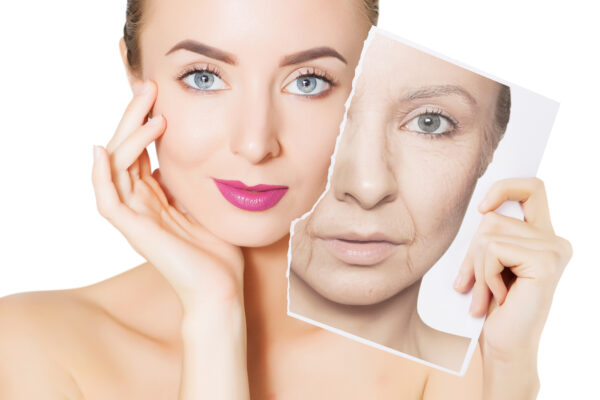
By minimizing repetitive motions, Botox treatment is known to have a relaxing effect on muscles, which can help reduce the look of wrinkles.
Botox is a widely recognized cosmetic procedure that has been found to be successful and safe in addressing visible signs of aging. Botox treatment is known to have a relaxing effect on muscles, which can help minimize the appearance of wrinkles by reducing repetitive movements.
The treatment is designed to address the appearance of deep folds by helping to smooth out the skin’s texture. Here are six notable advantages of the Botox procedure for reducing the appearance of wrinkles:
1. Boosts Your All-Natural Charm
One of the notable advantages of the Botox cosmetic procedure is its ability to swiftly enhance one’s inherent attractiveness. The treatment has been found to have potential benefits in addressing signs of aging, as it may help minimize the visibility of wrinkles.
Botox treatment is known for its ability to help relax facial muscles, which can contribute to the appearance of wrinkles and deep lines. The injections have the potential to enhance the appearance of the skin by reducing the appearance of forehead creases, frown lines, and crow’s feet.
2. Alternative to Surgical Wrinkle Removal
Botox is a popular choice among patients who prefer non-surgical treatment alternatives. Instead of employing incisions and anesthesia, the medical professional will utilize injections and numbing agents. For many individuals, this option can be seen as a favorable alternative to extended recovery periods resulting from lengthy procedures. Botox is a widely recognized method of anti-aging treatment that involves temporarily targeting specific facial muscles to achieve desired results.
The treatment tends to show more noticeable effects in facial areas that are subject to extensive muscle use. When the muscles are unable to move, it is possible for facial wrinkles and lines to become less prominent as a result.
The whole process is efficient, with a relatively short completion time, and minimal downtime. One can achieve a youthful look without having to allocate a significant amount of time to their already hectic schedule.
3. Delivers Rapid Outcomes
Injecting Botox is quick, and the effects can be seen almost immediately. It usually only takes a few hours for any minor side effects, like puffiness or redness, to disappear. After receiving the injections, you can resume your regular activities without delay.
When you get cosmetic injections, the lines and wrinkles on your face fade away in just a few days. The aftercare you provide will determine how long the effects will last, but it could be months. Repeated procedures can result in longer-lasting facial rejuvenation. Over time, you can expect a gradual but steady reduction in the appearance of fine lines and wrinkles on your face.
4. Secure Cosmetic Procedure
Getting Botox injections for cosmetic purposes is risk-free if you go to a qualified medical professional. There are no major adverse effects, and the healing process is typically smooth and rapid. You can safely restore your youthful appearance with these injections.
Since only local anesthetic is applied during the procedure, patients report minimal discomfort. The skin on the face will gradually become less wrinkly. The lack of continuous motion is what has led to this development. Botox can also be used to prevent the onset of wrinkles in other areas of the face.
5. Personalized Care Plans
A Botox cosmetic procedure is not a cookie-cutter solution. To achieve the best possible results, you and your cosmetic specialist will work together to pinpoint your specific concerns. They can start with low doses of the injections and gradually increase them as desired.
It is possible that areas with fine lines will only need a few injections while those with deeper, more noticeable wrinkles will need more. Customizable treatments allow professionals to achieve a more natural-looking outcome. You need not fret over taking on a plastic or frozen appearance. The best outcomes can be attained through a collaborative effort with your specialist.
6. Budget-friendly Cosmetic Procedure

When weighed against the price of high-end skincare products or cosmetic surgery, Botox cosmetic treatments may prove to be a more economical option.
Botox cosmetic treatments can offer a cost-effective alternative when compared to high-end skincare products or surgical treatments. The quantity of Botox used will determine the cost of the procedure.
Given the financial resources available, it is possible to consider adjusting the amount of Botox treatment to align with individual preferences and requirements. Botox cosmetic treatment has the potential to provide cost savings by potentially reducing the need for other skin treatment options, such as facials, various wrinkle treatments, or facial surgery. It can be a beneficial approach to consider in order to allocate funds wisely and potentially explore more costly procedures in the future.
Locate a Reputable Botox Treatment Provider
Discover the ideal Botox treatment service provider that can assist you in attaining optimal outcomes. Please take into account the qualifications, experience, patient satisfaction, and safety protocols in order to achieve the most satisfactory results. Select dependable and reputable Botox experienced professionals who possess the necessary expertise to execute the procedure with utmost safety and precision. Experience the unparalleled convenience and remarkable advantages of indulging in Botox treatment today.
Dentox is a training program designed exclusively for medical professionals seeking to master the art of safe and efficient Botox injections. With Dentox, you’ll unlock the secrets to administering Botox with precision, ensuring optimal results while minimizing any unnecessary waste. Experience the unparalleled expertise of Dr. Howard Katz, the visionary leader in the field. Don’t miss out on this incredible opportunity – reach out to us today and embark on a transformative journey.
Experience the ultimate learning journey with our wide range of educational options. Elevate your skills and knowledge by signing up for our exclusive live, online, or on-demand courses. Immerse yourself in a world of learning from the comfort of your own home, or choose to attend one of our captivating seminars held at various locations across the United States. Enroll today and embark on a transformative educational adventure like no other. Immerse yourself in our captivating live courses and explore the convenience of our online programs. Unleash your potential by visiting our website at https://dentox.com/live-courses/ and https://dentox.com/all-courses/ today!
What Education Is Needed to Work in the Field of Aesthetic Nursing?


Aesthetic nurses offer patients specialized treatment in the administration of injectables like Botox and filler, as well as tattoo removal and other cosmetic therapies.
Acquiring the knowledge necessary to enter a specialized field of nursing, such as aesthetic nursing, can be challenging.
When it comes to injecting Botox and filler, erasing tattoos, and other cosmetic therapies, aesthetic nurses provide specialized care. A skilled aesthetic nurse is necessary due to the delicate nature of the job involved. Yet aesthetic nurses come in many forms, each calling for a unique mix of expertise and experience.
What is the training for aesthetic nurses?
Everything a potential aesthetic nurse needs to know is covered in aesthetic nurse training. It comprises your initial RN certification as well as any subsequent certifications, continuing education credits, and on-the-job training.
To become an aesthetic nurse, follow these steps.
-
Certification for New Nurses
To practice aesthetic nursing, you must first become a registered nurse. Achieving this goal is achievable through graduation from a recognized nursing program. Either a two-year Associate Degree in Nursing (ADN) or a four-year Bachelor of Science in Nursing (BSN) program is required to become a Registered Nurse (RN).
After finishing it, you can sit for the National Council of Licensure Examination for Registered Nurses (NCLEX-RN). Your state’s nursing board will grant you a license once you have completed the NCLEX-RN exam required there.
-
Optional Advanced Study
Many registered nurses (RNs) who are interested in aesthetics and cosmetics choose to further their education by enrolling in graduate programs. It takes an additional year or two of graduate study beyond a bachelor’s degree in nursing to qualify for a position as an aesthetic nurse practitioner (MSN).
-
Training for aesthetic nurses
Once you have your RN license, obtaining experience and more education in aesthetic nursing is the next step.
One or more aesthetic services can be your area of expertise. The following are examples of non-invasive, non-surgical services that fall under this category:
- Patient Consultations: Arrange an appointment time, talk to the client, and perform any necessary health checks before beginning any cosmetic procedures.
- Examinations of the Skin: Evaluating Skin Health and Age to Determine Treatment Needs
- Patient Care: Provide pre- and post-operative treatment.
- Physician Assistance: Give a hand to physicians during Procedures or surgeries.
- Equipment Prep: Sterilize and Set Up Operating Rooms
- Cosmetic services: Administer Botox and filler injections; chemical peels; dermabrasion; CoolSculpting; and hair and tattoo removal using lasers.
Having at least two years of experience is typically a prerequisite for certification and employment. The easiest way for an aesthetic nurse to gain experience is to work with a doctor who is a board-certified physician in one of the following specialties:
- Plastic surgery
- Aesthetics
- Cosmetic surgery
- Dermatology
- Ophthalmology
-
Taking Courses in Aesthetic Nursing
If you wish to provide aesthetic services, you can hone your abilities through online and in-person training.
For every type of aesthetic service, courses for aesthetic nurses are available at all levels. The education they provide begins with the fundamentals and progresses to certifications and advanced techniques.
Continuing education courses also help you maintain your skills and stay updated on emerging technologies and techniques in this innovative and swiftly evolving field.
-
Earning Certifications as an Aesthetic Nurse
Certification is the pinnacle of aesthetic nursing training and a sign of professionalism.
There are four different aesthetic nursing certifications that validate expertise in distinct fields. There are four primary aesthetic nursing credentials, and they are:
- Certified Aesthetic Nurse Specialist (CANS)
- Certified Plastic Surgery Nurse (CPSN)
- Dermatology Nurse Certified (DNC)
- Dermatology Certified Nurse Practitioner (DCNP)
Training Nurses to be Botox Injectors
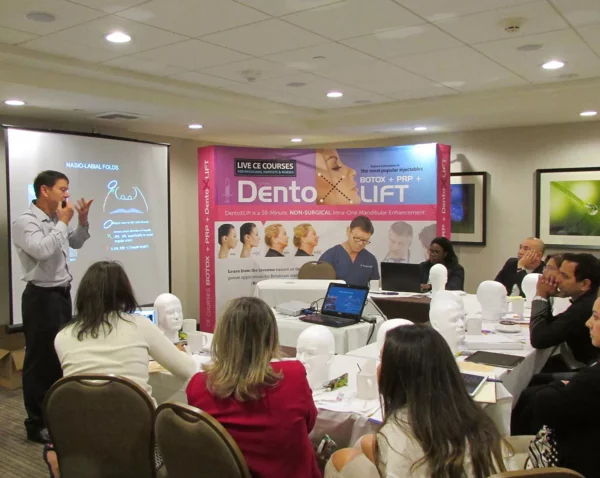
Dentox is a program designed to educate medical practitioners on the proper use and administration of Botox injections.
Botox and similar injectables have several medical uses, including the treatment of wrinkles and frown lines, chronic jaw pain, migraine headaches, and more. Aesthetic registered nurse training that focuses on injectables covers:
- Anatomy
- Assessment
- Dosing
- Patient safety
Dentox is a training program for medical professionals that teaches them how to inject Botox correctly and safely. Learn the latest techniques for improving your patients’ physical and mental health so you can offer them the best care possible. Learn more about the virtual and in-person patient training sessions at https://dentox.com/all-courses/botox-training and https://dentox.com/live-courses.
What drives the large percentage of young people who get Botox?


At 30, people may be bombarded by Botox and filler ads.
Prejuvenation treatments are becoming more popular among young adults.
A rather peculiar occurrence may have transpired as individuals reach the tender age of 30: they may find themselves inundated with advertisements promoting the wonders of Botox and fillers. Their media pages are absolutely brimming with stunning before-and-after snapshots showcasing flawlessly smooth skin, gorgeously plumped lips, exquisitely sculpted cheekbones, impeccably arched eyebrows, the most exquisite buccal fat removal, and an endless array of captivating cat-eyed, concave-contoured “Instagram Faces” that defy gravity by effortlessly going “up” instead of the ordinary “down”. A video on TikTok this week has enlightened us about the possibility of injecting Botox into the shoulders, thereby creating the illusion of a more petite frame in photographs.
Although widely used, with approximately 900,000 Botox injections performed annually in the UK, the aesthetic injectables industry lacks sufficient regulation. According to a recent study, it has been observed that over two-thirds of cosmetic practitioners responsible for administering injections lack the necessary qualifications as medical doctors. It is important to note that people with a variety of backgrounds can administer filler injections. Currently, there is a lack of national minimum standards for professional training or regulated qualifications, resulting in the availability of Botox treatments through unconventional channels such as hair salons, beauty apps, or Snapchat stories.
The precise number of individuals who choose to undergo fillers is difficult to determine, but it is estimated that around 4.3 million people opt for this procedure annually. Furthermore, the age demographic has yet to be determined; nevertheless, it is important to bear in mind that it is presently against the law to provide treatment to individuals below the age of 18.
There are inherent risks associated with the procedure, including but not limited to pain, headaches, swelling, bruising, infection, temporary facial paralysis, and the potential for facial disfigurement. However, despite the numerous accounts of adverse effects such as sagging eyelids and partially immobilized facial muscles, the need for injectable “treatments” remains on a rapid upward trajectory. This trend is particularly evident among individuals in their twenties, who are increasingly choosing to undergo “prejuventation” treatments or “Baby Botox” as a proactive measure to prevent signs of aging.
Two decades ago, plastic surgery was commonly regarded as a significant and transformative procedure. The procedure was notable for its high cost, protracted effects, and intrusive nature. It frequently involved a post-operative phase that included blood-soaked dressings and bruising around the eyes, which caused discomfort for the patient. In contemporary times, a growing number of young individuals perceive fillers as akin to routine grooming practices such as haircuts or manicures, thereby considering them an additional facet of their personal self-care regimen.
The notion of cognitive reframing suggests that injectables should not be perceived solely as a means of enhancing one’s appearance but rather as a form of self-affirmation. However, this perspective is deemed laughable by experts in the field. Adolescents, who have been exposed to a highly curated digital environment where they can easily manipulate their appearance with a simple click, are being advised to prioritize their personal happiness by the same entities that contribute to their deep-seated insecurities and dissatisfaction.

Kylie Jenner is a public figure who has been linked to the widespread use of lip fillers.
When individuals are consistently exposed to the notion that natural appearances are deviating from the norm and that possessing silicone enhancements has become a symbol of social status, coupled with the prevailing idea that one can attain a resemblance to Kylie Jenner, a prominent figure associated with the proliferation of lip fillers, for a relatively modest sum, it is only natural for them to be enticed by the allure of dopamine-induced euphoria and the prospect of perpetual youthfulness.
The trouble is, once you start down that path, it’s almost impossible to turn back. Because Botox and fillers are eliminated from the body after three to six months, patients must schedule regular touch-ups to sustain their rejuvenated appearance. It’s an ideal substance for new users to try. These days, altering one’s outward appearance is a simple process. Follow, filter, and filler is an appealing pipeline.
The prevalence of Love Islanders who have undergone extreme makeovers makes it interesting to see how our culture promotes cosmetic interventions as desirable. However, it is paradoxical that we simultaneously condemn gender-affirming surgery by labeling it “mutilation.” Indeed, the latter option entails a significantly higher degree of severity, intrusiveness, and permanence.
However, it is crucial to recognize that both alternatives stem from a fundamental discontentment with one’s body image and a sense of dysphoria. This stems from the belief that by altering our external appearance, we can attain a heightened sense of self-worth and contentment internally. The proposed approach can be considered a cosmetic remedy for a psychological issue. Gender-affirming care is subject to rigorous regulation, ensuring that it adheres to stringent guidelines and thresholds. Unfortunately, the injectables industry is not in a favorable state.
Experience the extraordinary potential to revolutionize the lives of your patients with Dentox’s all-encompassing education and training program. As a medical professional, you are presented with an unparalleled chance to make a profound impact. With our expert guidance, we guarantee a flawless journey toward achieving your dream cosmetic objectives, leaving you worry-free every step of the way.
Discover the ultimate destination for an extensive array of cutting-edge distance learning programs. Look no further than our exceptional website at https://dentox.com/all-courses/botox-training/. Also, experience the ultimate in hands-on learning with our live patient courses at Dentox. Find the extraordinary opportunities that await you at https://dentox.com/live-courses/.
A Survey Finds That Just One-Third of Injectors in Cosmetic Surgery in The UK Are Non-Doctors

A new study reveals that more than two-thirds of the people in the United Kingdom who are injecting patients with substances like Botox for cosmetic purposes are not medical doctors.
This research is the first survey of the professionals who administer Botox and other injectable fillers for cosmetic purposes.
The industry cannot be properly governed without identifying the academic and professional backgrounds of practitioners.
Researchers from UCL combed through 3,000 websites to learn about the education, training, and experience of people delivering treatments.

Researchers from UCL combed through 3,000 websites to gather information regarding the education, training, and experience of those providing treatments.
They found 3,667 individual doctors and 1,224 independent clinics that performed cosmetic injections.
There were 32% doctors, 13% nurses, 24% dentists, and 8% dental nurses in terms of the professions represented.
The research showed that out of the 1,163 doctors counted, 41% were specialists and 19% were general practitioners.
Among the 27 specialties represented on the specialist register, the survey revealed that plastic surgery made up the largest group (37%), followed by dermatology (18%).
The market for cosmetic injectables in the United Kingdom faces well-documented challenges that have not yet been addressed.
Without greater information about the practitioners’ educational and professional backgrounds, the industry cannot be adequately governed.
The vast majority of practitioners are not medical doctors but rather other types of healthcare workers or even non-medical workers like estheticians.
The diversity of backgrounds raises a broader issue of competence and consent.
Making sure that licensed professionals have the knowledge and experience to provide care in a way that minimizes harm to patients is a major problem for the government’s licensing process.
A patient’s informed consent hinges on their trust that the healthcare provider performing their procedure is qualified to do so.
This study fills in some of the blanks for regulators and patients, providing valuable information as the UK strives to make the cosmetic injectables market safer and more open.
The study predicts that the value of the UK injectables industry will reach £11.7 billion by 2026, yet the market is currently unregulated.
The government of the United Kingdom is currently revising its injectables policy and will launch a public consultation on the industry in August 2023. In 2024, the Medical Act is scheduled to be revised in light of the recommendations made in this report.
Rapid growth has been seen in the cosmetic injectables market in the United Kingdom in recent years. There hasn’t been much in the way of monitoring or investigation into this.
The results should serve as a wake-up call to policymakers, prompting them to enact regulations and professional standards that adequately protect patients from harm.
Although most injection-related hazards are very minor and short-lived, some of the physical problems can be lifelong and severely limiting.
When medical procedures go wrong, patients may suffer not only physical harm but also significant mental and financial distress.
Until recently, there has been a lack of data on the frequency of problems and the effect they have on patients, as well as the qualifications of those administering cosmetic injections.
On July 3rd, the results of another study were published, showing that 69% of respondents had experienced chronic side effects such as pain, anxiety, and headaches.
Dentox is a course designed to teach healthcare professionals how to administer Botox to patients in the most secure and efficient way possible. Online classes can be found at https://dentox.com/all-courses/botox-training/, and courses with actual patients can be found at https://dentox.com/live-courses/.





